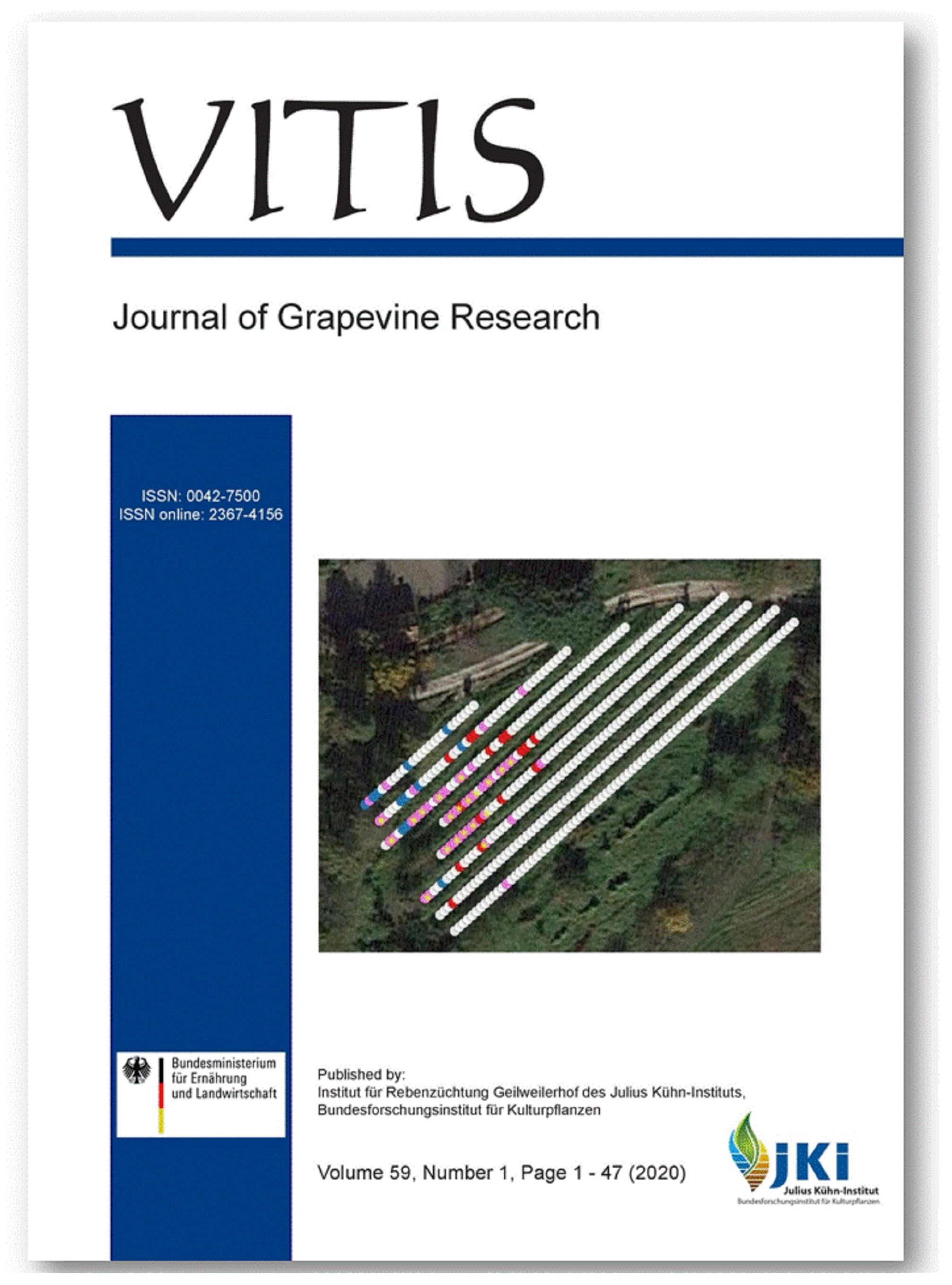QTL identification and candidate gene identification for monoterpene content in grape (Vitis vinifera L.) berries
DOI:
https://doi.org/10.5073/vitis.2020.59.19-28Keywords:
grape; monoterpene; linkage map; QTL; candidate gene.Abstract
Great progress has been made during the last decade in clarifying the molecular details of aroma accumulation in grape berries. However, the multigene complex controlling monoterpene accumulation in grape is not well understood. To shed light on this issue, the grapes of 149 F1 progenies from the cross 87-1 (Vitis vinifera L.) × 9-22 (Vitis vinifera L.) were characterized at the mature stage for three representative free monoterpenes during five growing seasons. A total of 202, 184 and 255 polymorphic SSR (simple sequence repeat) markers were contracted on the maternal 87-1, paternal 9-22 and consensus genetic maps, respectively. On the consensus map, we confirmed a major QTL (quantitative trait locus) for free linalool, nerol and α-terpineol content on linkage group (LG) 5, and a stable QTL for free linalool and α-terpineol was detected on LG 10. In addition, two new stable QTLs for free monoterpene (linalool, nerol and α-terpineol) contents were identified on LG 11 and LG 18 that explained up to 42.5 % of the total variance. Eleven promising candidate genes related to pentatricopeptide repeat (PPR)-containing proteins, seed maturation protein, RING finger protein, and AP2/ERF transcription factors might be potentially involved in monoterpene accumulation. The stable QTLs and candidate genes identified in this study provide new insights into free monoterpene accumulation in grape.
Downloads
Additional Files
Published
Issue
Section
License
The content of VITIS is published under a Creative Commons Attribution 4.0 license. Any user is free to share and adapt (remix, transform, build upon) the content as long as the original publication is attributed (authors, title, year, journal, issue, pages) and any changes to the original are clearly labeled. We do not prohibit or charge a fee for reuse of published content. The use of general descriptive names, trade names, trademarks, and so forth in any publication herein, even if not specifically indicated, does not imply that these names are not protected by the relevant laws and regulations. The submitting author agrees to these terms on behalf of all co-authors when submitting a manuscript. Please be aware that this license cannot be revoked. All authors retain the copyright on their work and are able to enter into separate, additional contractual arrangements.



